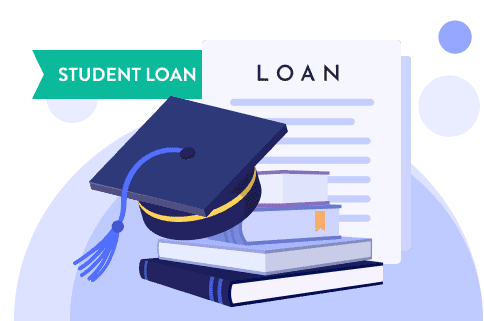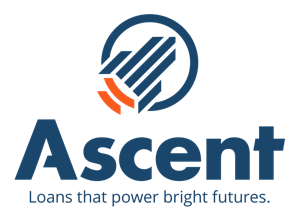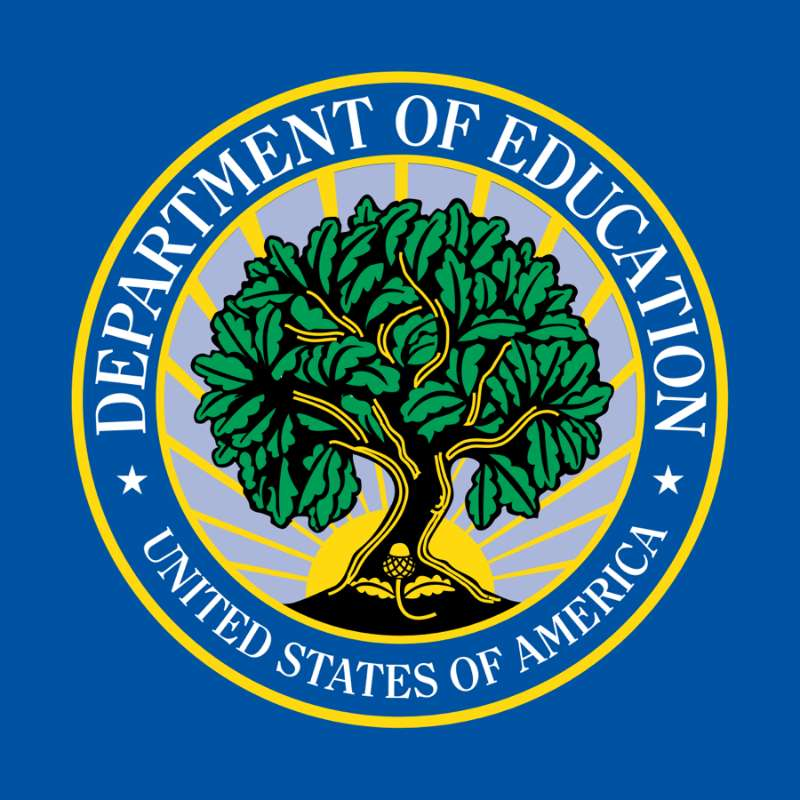Best Student Loans in California of 2024

Updated: December 28, 2023
Advertising & Editorial Disclosure
As the cost of higher education in California continues to soar, many students are left grappling with how to finance their dreams. But don't let this financial challenge deter you from pursuing your educational goals. With MoneyGeek's guide, you can navigate this landscape and find the best student loans in California to fund your studies.
Overall, College Ave offers the best student loans in the Golden State. Earnest is ideal for the lowest interest rates, while Ascent is an excellent option for those with bad credit. MPower Financing is preferable for international students, whereas Discover provides the best deals for students who need a co-signer.
Understanding Student Loans
Student loans serve as a form of financial aid designed to help students pay for post-secondary education and the associated fees, such as tuition, books and living expenses. They play a crucial role in financing higher education, especially in states like California, where education costs are often high.
The basic mechanics of a student loan involve borrowing a certain amount of money from a lender to pay for college expenses. This borrowed amount, or principal, accrues interest over time. The borrower is responsible for repaying the principal and the accrued interest to the lender. Repayment typically begins after the student graduates, leaves school or drops below half-time enrollment. However, terms can vary based on the type of loan.
There are two main types of student loans:
Federal student loans: Federal student loans often have low interest rates and flexible repayment options. They also offer benefits such as deferment options and access to income-driven repayment plans.
Private student loans: Private student loans often have higher interest rates and less flexible repayment options than federal loans. They can be a good option for students who have exhausted all other forms of financial aid.
Keep in mind that the federal government funds federal student loans, while private student loans are funded by private entities such as banks, credit unions and other financial institutions.
Best Private Student Loans in California
When federal aid isn't enough to cover all the costs associated with your education, private student loans can help bridge the gap. These loans are often used to cover tuition, room and board, books and other education-related expenses.
Before getting a private student loan, it's crucial to weigh its pros and cons to determine if it's best for your situation. On the positive side, private student loans can offer higher loan limits than federal loans, which can be beneficial if your education costs are high. But the downside is that they come with higher interest rates, meaning you could end up paying significantly more in interest over the life of the loan.
- College Ave
- 4.43% - 17.99%Fixed APR Range
- 5.59% - 17.99%Variable APR Range
- $1,000 minimum, no maximumLoan Amount Range
- Not requiredCo-signer
College Ave is a private student loan company that offers loans for undergraduates, graduates and parents of college students. It offers flexible repayment terms and loan options.
Pros
- Variety of loan products, including undergraduate, graduate and parent loans.
- Multiple repayment options, including interest-only payments while in school.
- No origination fees or prepayment penalties.
Cons
- Requires a credit check, potentially making it hard for students with no or low credit history.
- Doesn't offer loan pre-qualification, so you won't know your rate until you apply.
- Co-signer release only after half the loan term has passed.

College Ave
Best Overall
- Earnest
- 4.43% - 14.90%Fixed APR Range
- 5.32% - 16.20%Variable APR Range
- $1,000 upLoan Amount Range
- Allowed Co-signer
Earnest is a technology-enabled fintech lender offering low-interest private student loans and refinancing.
Pros
- Offers flexible repayment terms and forbearance options.
- No origination or prepayment fees.
- Provides loan pre-qualification; you can check rates without affecting your credit.
Cons
- Requires a good credit history, which might be a hurdle for some borrowers.
- Not available in all U.S. states.
- No co-signer release option.

Earnest
Best With Lowest Interest Rates
- Ascent
- 4.36%–14.08%Fixed APR Range
- 1.47%–11.31%Variable APR Range
- $2,001–$200,000Loan Amount Range
- Non-U.S. citizens and temporary residentsCo-signer
Ascent is a private lender providing college and graduate student loans. The company offers both co-signed and non-co-signed loan options.
Pros
- Offers both co-signed and non-co-signed loan options.
- Provides an option for a 1% cash back graduation reward.
- Offers loan pre-qualification, so you can check rates without affecting your credit.
Cons
- For non-co-signed loans, a borrower must meet certain eligibility requirements, like GPA.
- Loans not available to international students.
- Higher interest rates for non-co-signed loans.

Ascent
Best For Those With Bad Credit
- Federal Parent PLUS Loan
- Starts at 7.54%Fixed APR Range
- Not SpecifiedVariable APR Range
- Up to the total cost of attendanceLoan Amount Range
- OptionalCo-signer
Federal Parent PLUS Loans are part of the federal Direct Loan Program. They are available to parents of dependent undergraduate students to help pay for education expenses.
Pros
- Available to parents regardless of the student's financial need.
- Loan funds are sent directly to the school.
- Fixed interest rates for the life of the loan.
Cons
- Requires a credit check.
- Has a higher interest rate compared to other federal student loans.
- Origination fee is deducted from each loan disbursement.

Federal Parent PLUS Loan
Best For Parents
- MPower Financing
- 13.72% – 15.01%Fixed APR Range
- Not SpecifiedVariable APR Range
- $2,001 up to $100,000Loan Amount Range
- Not requiredCo-signer
MPower Financing offers student loans to both domestic and international students without requiring a credit history or a co-signer.
Pros
- No co-signer or credit history required.
- Available to international students.
- Offers interest rate discounts for certain behaviors like on-time payments.
Cons
- Loan amounts are limited.
- Higher interest rates compared to other lenders.
- Not available for all schools or programs.

MPower Financing
Best For International Students
- Discover
- 3.99%–11.59%Fixed APR Range
- 1.79%–11.09%Variable APR Range
- $1,000 up to 100% of college expensesLoan Amount Range
- Optional Co-signer
Discover is a well-known financial institution that offers private student loans for undergraduate and graduate students, as well as student loan refinancing.
Pros
- Offers a one-time cash reward for good grades on each new student loan.
- Multiple repayment options available.
- No origination fees, late fees or prepayment penalty.
Cons
- Requires a credit check, which could be a hurdle for some borrowers.
- Doesn't offer pre-qualification, so you won't know your rate until you apply.
- No co-signer release option.

Discover
Best For Those That Need A Co-signer
Federal Student Loans in California
Federal student loans are a form of financial aid provided by the U.S. government to help students pay for their education. These loans are available to both undergraduate and graduate students. Here are some of their key benefits:
How to Apply for Federal Student Loans in California
In California, you can apply for a federal student loan by taking these steps:
Complete the Free Application for Federal Student Aid
To complete the Free Application for Federal Student Aid (FAFSA), you need to hand over information about your financial situation. Ensure that tax returns, W-2s and other financial documents are on hand to provide accurate information.
Review your Student Aid Report
You receive a Student Aid Report (SAR) after submitting your FAFSA. It indicates your Expected Family Contribution (EFC), which is used to determine your eligibility for need-based aid. Review it carefully to ensure the information is correct.
Evaluate your financial aid letters
Once your FAFSA is processed, you'll receive financial aid award letters from the schools you listed on your FAFSA. These letters outline the types and amounts of aid you're eligible to receive.
Accept your financial aid
After reviewing your award letters, you'll need to accept the financial aid. This is typically done through the financial aid office at the school you plan to attend.
Complete entrance counseling
If you're borrowing federal student loans for the first time, you'll need to complete entrance counseling. This online session helps you understand your obligations as a borrower and provides information about the loan process.
Sign your Master Promissory Note
Finally, you'll need to sign a Master Promissory Note (MPN), which is a legal document where you promise to repay your loan and any accrued interest and fees. It also explains the terms and conditions of your loan.
The Types of Federal Student Loans Available in California
There are several types of federal student loans available to students in California. These include Direct Subsidized Loans, Direct Unsubsidized Loans, Direct PLUS Loans and Direct Consolidation Loans.
Direct Subsidized Loans: With this type of federal student loan, interest does not accrue while you're in school or during the six-month grace period after graduation. Additionally, eligibility is based on financial need, not credit history.
Direct Unsubsidized Loans: These loans accrue interest immediately upon disbursement. While you can defer interest payments, any unpaid interest will be capitalized, increasing your overall loan balance.
Direct PLUS Loans: These loans are available to graduate or professional students and parents of dependent undergraduate students. Eligibility is not based on financial need; a credit check is part of the application process.
Direct Consolidation Loans: These loans allow you to combine all your loans into one, simplifying your repayment process. The interest rate is fixed and is based on the weighted average of the interest rates on your original loans.
Student Loan Forgiveness in California
Student loan forgiveness is a program that cancels a portion or all of a borrower's student loan debt, meaning the borrower is no longer required to repay some or all of their loan. These programs are often offered to individuals working in certain professions or sectors, such as education or public service.
Several student loan forgiveness programs are available in California, particularly for teachers and public service workers.
California State Loan Repayment Program (SLRP)
The California State Loan Repayment Program (SLRP) is designed to help health professionals working in shortage areas. Eligible applicants can receive up to $50,000 in loan repayment in exchange for a two-year service commitment.
California State Loan Assumption Program for Education (APLE)
The California State Loan Assumption Program for Education (APLE) is a state-funded program that encourages outstanding students, district interns and out-of-state teachers to become credentialed and teach in specified California public schools. Participants can receive up to $19,000 in loan assumption benefits.
Public Service Loan Forgiveness (PSLF)
While not specific to California, the Public Service Loan Forgiveness (PSLF) program is available to public service workers across the country. This program cancels the remaining balance on your student debt after you have made 120 qualifying payments while working in public service.
It’s worth noting that these programs' eligibility requirements and application processes vary. For the SLRP, you must be a licensed health professional working in a health professional shortage area. You can apply for this program through the California Student Aid Commission's website.
Similarly, you can apply for the APLE on the California Student Aid Commission's website. However, you must be a teacher serving in a low-performing school to qualify for this program.
For the PSLF, you must be a public service worker who has made 120 qualifying payments on your Direct Loans. You can submit your PSLF application to the U.S. Department of Education.
Tips for Managing Student Loans
Effectively managing your student loans is key to sustaining financial wellness throughout your college journey and beyond. Here are some strategies you can employ to navigate this process:
Scholarships and Grants as Alternatives
Scholarships and grants are forms of financial aid that can help you pay for your education. Their primary benefit is that they don't need to be repaid, reducing the overall cost of your education and the amount you may need to borrow in student loans. This can make a significant difference in your financial situation after graduation.
For instance, if you receive a $5,000 scholarship each year for a four-year degree, that's $20,000 less that you need to borrow and repay with interest.
Finding and applying for scholarships and grants in California involves several steps, including:
Completing the FAFSA
Start by completing the FAFSA, which will determine your eligibility for federal aid, including grants. The form is available online at the official FAFSA website.
Applying for California State Aid
After completing the FAFSA, apply for state aid through the California Student Aid Commission. This includes the Cal Grant program, which offers several types of grants based on financial need and academic achievement.
Searching for scholarships
Next, start searching for scholarships. Many resources are available to help you find scholarships, including online scholarship databases, your school's financial aid office and local community organizations.
Preparing your applications
Once you've identified scholarships and grants to apply for, start preparing your applications. This may involve writing essays, gathering letters of recommendation or preparing a portfolio of work. Be sure to tailor each application to the specific scholarship or grant.
Submiting your applications
After preparing your applications, submit them by the specified deadlines. Be sure to double-check each application for completeness and accuracy before submitting.
The Impact of Student Loans on Credit
When you take out a student loan, it's reported to the three major credit bureaus — Experian, Equifax and TransUnion. This loan becomes part of your credit history, which makes up a significant portion of your credit score. Student loans can help you build a strong credit history and improve your credit score if managed well. This is because a history of on-time payments demonstrates to lenders that you're a responsible borrower.
If you default on your student loan, your entire balance becomes due immediately, and you lose eligibility for deferment, forbearance and other repayment plans. A default will also be reported to the credit bureaus, leading to a significant drop in your credit score. This can make it more difficult to qualify for credit cards, mortgages or even rental applications in the future.
Frequently Asked Questions
Whether you're a first-time borrower or looking to better understand your existing loans, here are answers to some frequently asked questions about student loans in California.
Eligibility for student loans in California depends on the type of loan. For federal student loans, you must be a U.S. citizen or eligible non-citizen, have a valid Social Security number and be enrolled or accepted for enrollment in a degree or certificate program.
You must complete the Free Application for Federal Student Aid (FAFSA) to apply for a federal student loan. You must submit a verified grade point average (GPA) to the California Student Aid Commission for state-specific aid like the Cal Grant.
The main difference between subsidized and unsubsidized federal loans is who pays the interest. For subsidized loans, the U.S. Department of Education pays the interest while you're in school at least half-time, during your grace period and any deferment periods. You're responsible for paying the interest for unsubsidized loans during all periods.
Interest on student loans is calculated as a percentage of the unpaid principal amount (the amount you borrowed). This interest typically accrues daily, starting when your loan is disbursed.
There are several repayment options for student loans, including standard, graduated and extended repayment plans. There are also income-driven repayment plans, which base your monthly payment on your income.
If you can't repay your student loan, it's essential to contact your loan servicer as soon as possible. They can help you understand your options, including changing your repayment plan, deferring payments or applying for forbearance. If you don't make payments and don't make arrangements with your loan servicer, you could end up in default, which has serious consequences.
Student loan forgiveness is a program that cancels a portion or all of your student loan debt. Several forgiveness programs are available, including the Public Service Loan Forgiveness program and teacher loan forgiveness. Eligibility requirements vary by program but often involve making a certain number of payments while working in a specific profession or sector.
About Christopher Boston

sources
- California Grants Portal. "California State Loan Repayment Program (SLRP)." Accessed August 8, 2023.
- California Student Aid Commission. "Assumption Program of Loans for Education (APLE)." Accessed August 8, 2023.
- Federal Student Aid. "Free Application for Federal Student Aid." Accessed August 25, 2023.
- Federal Student Aid. "Public Service Loan Forgiveness (PSLF)." Accessed August 8, 2023.
Editorial Disclosure: Opinions, reviews, analyses and recommendations are the author’s alone and have not been reviewed, endorsed or approved by any bank, credit card issuer, hotel, airline, or other entity. Learn more about our editorial policies and expert editorial team.
Advertiser Disclosure: MoneyGeek has partnered with CardRatings for our coverage of credit card products. MoneyGeek and CardRatings may receive a commission from card issuers. To ensure thorough comparisons and reviews, MoneyGeek features products from both paid partners and unaffiliated card issuers that are not paid partners.